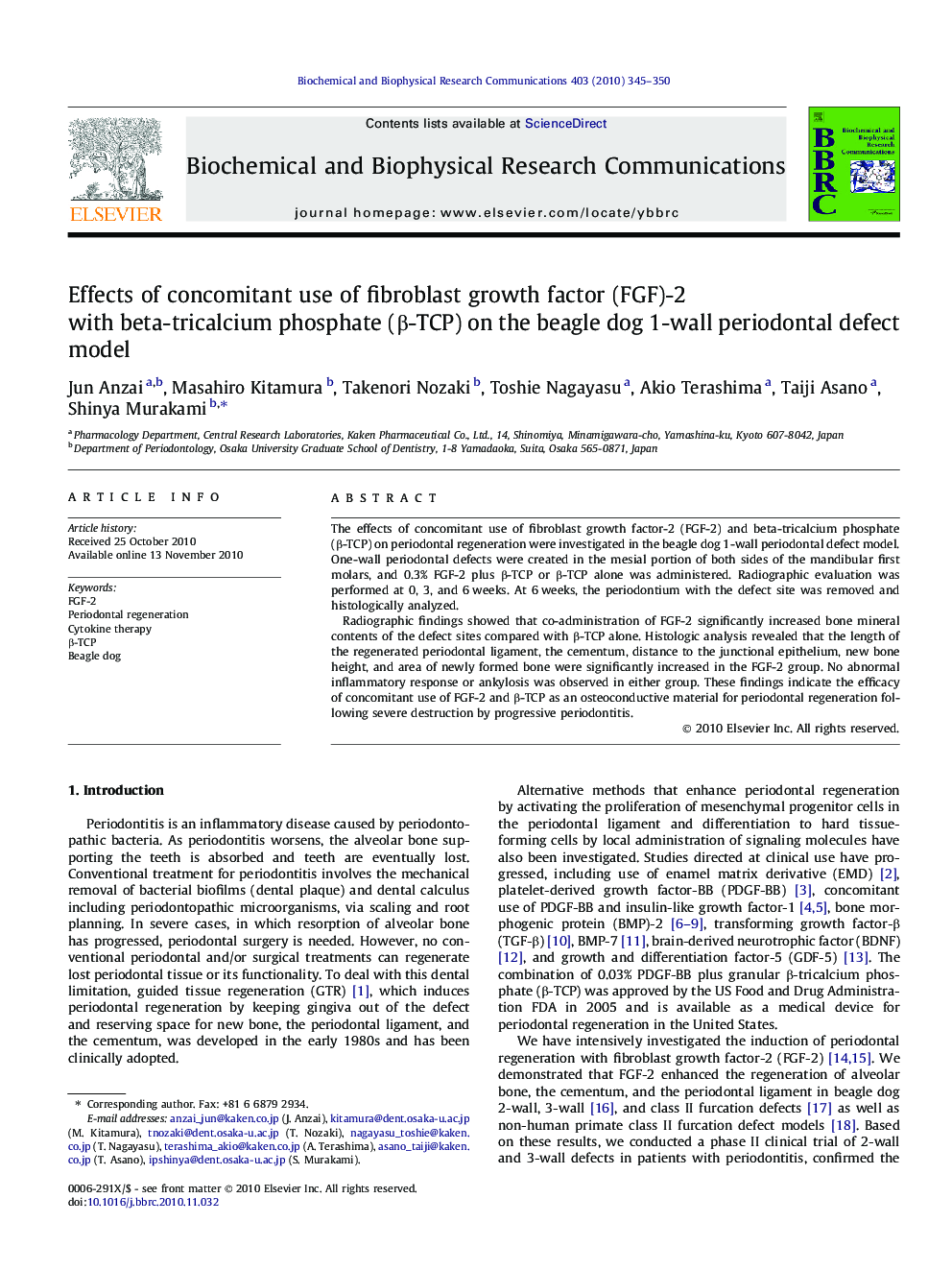| Article ID | Journal | Published Year | Pages | File Type |
|---|---|---|---|---|
| 1931089 | Biochemical and Biophysical Research Communications | 2010 | 6 Pages |
The effects of concomitant use of fibroblast growth factor-2 (FGF-2) and beta-tricalcium phosphate (β-TCP) on periodontal regeneration were investigated in the beagle dog 1-wall periodontal defect model. One-wall periodontal defects were created in the mesial portion of both sides of the mandibular first molars, and 0.3% FGF-2 plus β-TCP or β-TCP alone was administered. Radiographic evaluation was performed at 0, 3, and 6 weeks. At 6 weeks, the periodontium with the defect site was removed and histologically analyzed.Radiographic findings showed that co-administration of FGF-2 significantly increased bone mineral contents of the defect sites compared with β-TCP alone. Histologic analysis revealed that the length of the regenerated periodontal ligament, the cementum, distance to the junctional epithelium, new bone height, and area of newly formed bone were significantly increased in the FGF-2 group. No abnormal inflammatory response or ankylosis was observed in either group. These findings indicate the efficacy of concomitant use of FGF-2 and β-TCP as an osteoconductive material for periodontal regeneration following severe destruction by progressive periodontitis.
Research highlights► Concomitant use of FGF-2 and β-TCP (an osteo-conductive scaffold) significantly promotes periodontal regeneration in the severe periodontitis model (1-wall defect model) of beagle dog. ► FGF-2 enhanced new bone formation via β-TCP at the defects. ► In particular, FGF-2 dramatically regenerated new periodontal ligament and cementum formations at the defects, that is one of the most important healing outcomes during the process of periodontal regeneration. ► Epithelial downgrowth (undesirable wound healing) was decreased by administration of FGF-2. ► This manuscript indicates for the first time that concomitant use of FGF-2 and β-TCP is efficacious in regenerating periodontal tissue following severe destruction of the tissue by progression of periodontitis.
